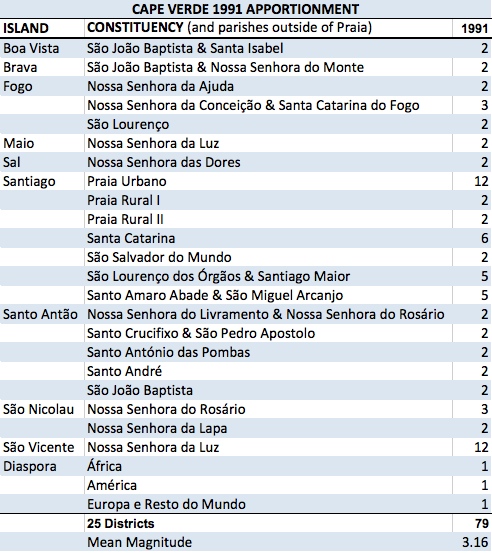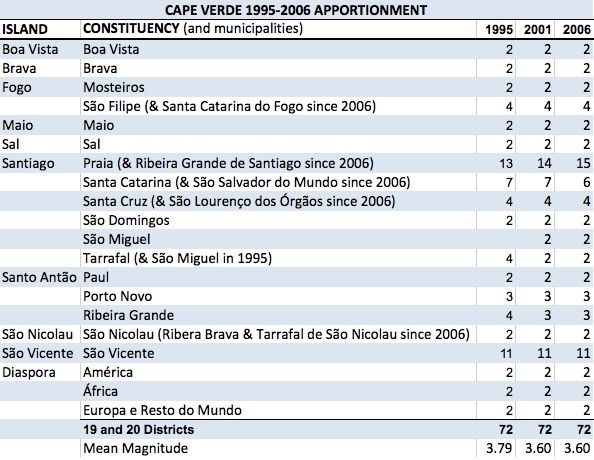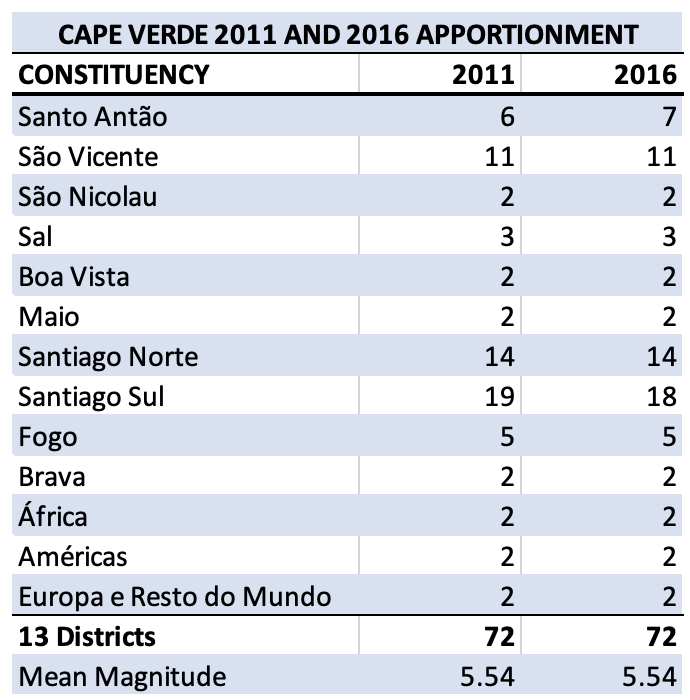Cape Verde allocates seats in the Assembleia Nacional (National Assembly) within constituencies off of closed party lists by the d’Hondt method of proportional representation. The d’Hondt quota for each party equals the number of votes received divided by the number of seats held plus 1 with the quota recalculated each time it gains a seat. Seats are awarded in descending order of quotas until all seats in the constituency have been distributed. Candidates of the appropriate party win seats in the order that they appear on the list. (See Mozambique for an example of the d’Hondt allocation process.)
As detailed below, the boundaries of constituencies and the apportionment of mandates to them has changed over the years and resulted in the definition of two electoral systems for Cape Verde even though the d’Hondt allocation method has been used consistently.
Cape Verde 1 (1991-2006)
The following table shows the constituencies and apportionment in 1991. Outside of the Praia area, constituencies were named after the parishes contained within them. There were also three diaspora constituencies.
 The table below shows the constituencies and apportionment in 1995, 2001 and 2006. Municipalities not included in the constituency name are mentioned in parentheses; São Nicolau was divided into two new municipalities in 2005. The total number of seats declined from 79 to 72.
The table below shows the constituencies and apportionment in 1995, 2001 and 2006. Municipalities not included in the constituency name are mentioned in parentheses; São Nicolau was divided into two new municipalities in 2005. The total number of seats declined from 79 to 72.
The number of constituencies declined by 6 in 1995 but then increased by 1 in 2001. The 3 diaspora constituencies were retained. Average constituency magnitude increased by just under 20%, the Lijphart threshold for delineating different electoral systems, so these three elections are counted as part of the first Cape Verdean electoral system.
Cape Verde 2 (2011-)
In 2011, the number of constituencies declined to 13, resulting in a significant increase in average constituency magnitude that separates the second Cape Verdean electoral system from the first. The following table shows the constituencies and apportionment in 2011 and 2016. Constituencies now correspond to islands except on Santiago, which is split into north and south constituencies. The 3 diaspora constituencies have also been retained.


